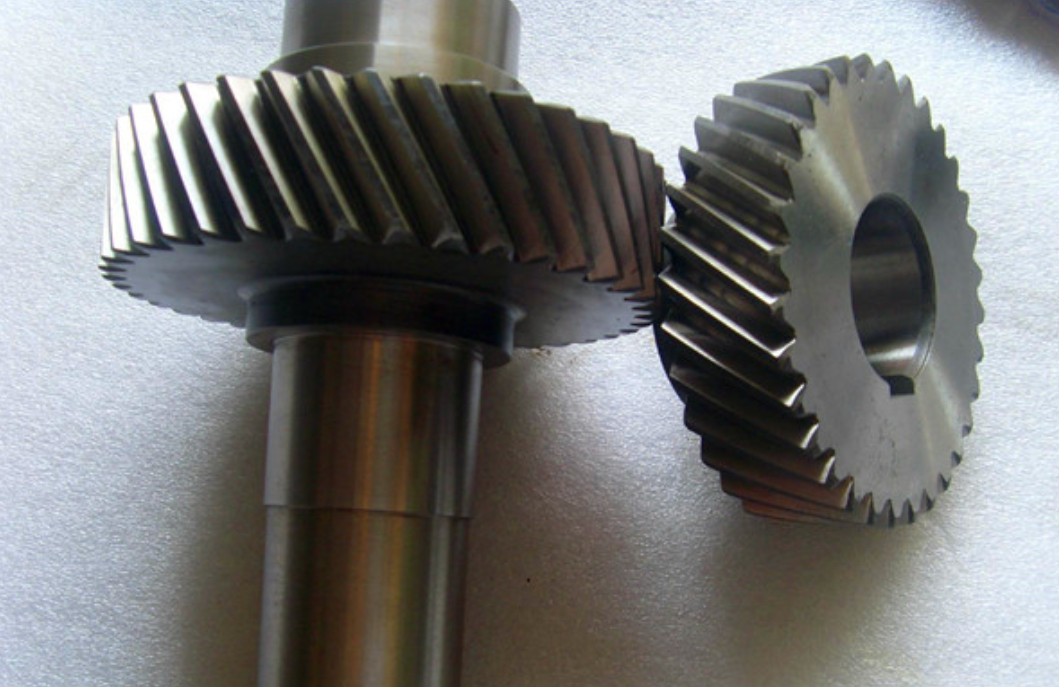This study investigates a data-driven approach to optimize the fatigue life of helical gears through dynamic simulation-guided modification strategies. By integrating multi-domain simulations and advanced clustering algorithms, a novel node displacement modification method is developed to enhance load distribution and operational reliability in high-speed gear transmission systems.

Dynamic Simulation and Load Spectrum Generation
The helical gear pair (112/63 teeth, 2.5 mm module) was analyzed using Adams dynamics with the Impact contact force model:
$$
F = \begin{cases}
\max\left\{K(x_1 – x)^p – \text{step}(x,x_1-d,C_{\max},x_1,0)\dot{x},0\right\} & x < x_1 \\
0 & x \geq x_1
\end{cases}
$$
where $K=1.56 \times 10^7$ N/mm$^{1.5}$ represents contact stiffness. The dynamic simulation revealed periodic contact force variations with 34.6 kN mean value and $5.11 \times 10^{-5}$ s cycle period.
Finite Element Analysis and Fatigue Prediction
Static contact analysis using ANSYS Workbench showed maximum contact stress of 602.95 MPa at the driven gear tooth tip. The modified S-N curve for 20CrMnMo steel was implemented in nCode:
$$
m\lg{\sigma} + \lg{N} = \lg{G} \quad (G=3.68 \times 10^{56}, m=15.29)
$$
Fatigue life prediction results demonstrated:
| Parameter | Value |
|---|---|
| Minimum Life Cycles | $7.35 \times 10^{7}$ |
| Critical Location | Driven Gear Tip |
| Total Service Life | $1.44 \times 10^{13}$ cycles |
Node Displacement Modification Methodology
The proposed modification strategy employs K-Means clustering (k=2) to process 130 nodal displacement points from 10 cross-sections:
| Fitting Method | RMS Error (×10$^{-6}$) | MAE (×10$^{-3}$) |
|---|---|---|
| Polynomial | $2.035 \times 10^{-6}$ | $1.183 \times 10^{-3}$ |
| Neural Network | $2.112 \times 10^{-6}$ | $1.201 \times 10^{-3}$ |
| Custom Basis Function | $1.764 \times 10^{-6}$ | $1.150 \times 10^{-3}$ |
The optimal modification curve was derived using basis function fitting:
$$
\text{CMC} = -0.9734 – 0.0038x + 0.0001x^2 + 0.9998\sqrt{x} + 0.0001e^x
$$
Performance Comparison
The node displacement modification demonstrated superior performance compared to conventional methods:
| Modification Type | Fatigue Life (×10$^{13}$) | Improvement |
|---|---|---|
| Unmodified | $1.44$ | – |
| Linear (Traditional) | $1.59$ | 10.42% |
| Node Displacement | $1.86$ | 29.17% |
Parametric Optimization
Sensitivity analysis revealed the optimal modification depth:
| Δ1 (mm) | Life (×10$^{13}$) | Δ1 (mm) | Life (×10$^{13}$) |
|---|---|---|---|
| 0.018 | $1.66$ | 0.022 | $1.80$ |
| 0.019 | $1.77$ | 0.023 | $1.76$ |
| 0.020 | $1.80$ | 0.024 | $1.70$ |
| 0.021 | $1.86$ | 0.025 | $1.65$ |
Conclusion
The developed node displacement modification method enhances helical gear performance through:
- 16.98% fatigue life improvement over conventional linear modification
- Precise compensation of elastic deformation patterns
- Optimal load distribution across tooth surfaces
This methodology provides a systematic approach for designing high-reliability helical gear systems in demanding industrial applications.
